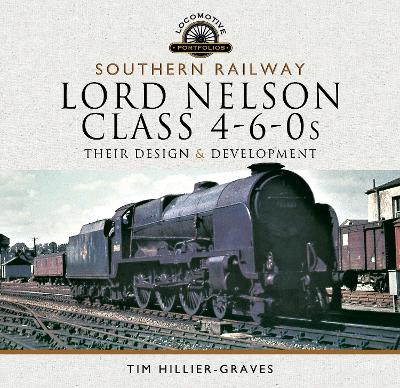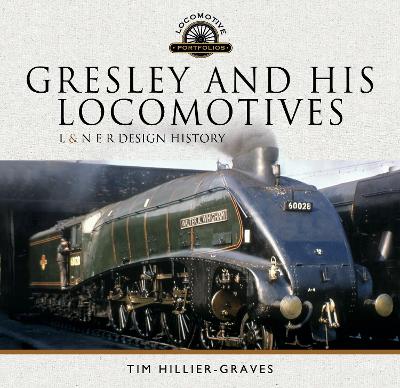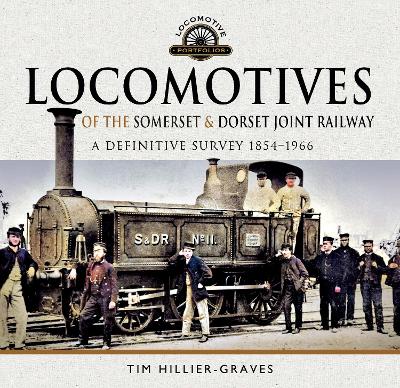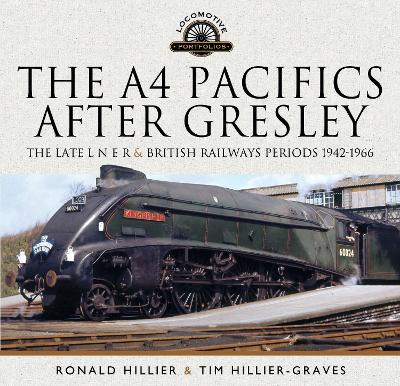Locomotive Portfolio
8 total works
She re-appeared in August 1952, part Princess and part Coronation, but her new life was cut short by the disaster at Harrow in October. Although many thought her repairable, she was scrapped to make way for another 'experimental' steam engine. This book presents the compulsive and fascinating story of this remarkable locomotive, drawn from a wide variety of sources, many previously untapped and unpublished, including memories of the designers, the crew who drove her, accountants and hard-headed business men, PR teams, the press, the passengers and many more.
Within a few short years, however, their premier position in the company had been taken by a very worthy successor, the Princess Coronation Class. Overshadowed and often overlooked, they tend to be seen as a stepping stone to something better. Yet, in reality they stand up well to the closest scrutiny, and this book tells the story of these engines through the eyes of those who came into contact with them. They also best represent the impact William Stanier had on locomotive design and best describe the way he changed the culture of the LMS to allow it to grow successfully. It is a story of great endeavor and courage that can only be told by revealing and discussing political, social, economic and engineering issues.
Much has been written about these locomotives but no story is ever complete, with new information and photographs emerging to deepen our understanding of them. This book provides an in depth view that re-examines these impressive engines using, new material, eye witness accounts, contemporary assessments and more than 200 photographs and drawings.
To Gresley must go great credit for many of the LNER's achievements, but those around him have faded into obscurity and are now largely forgotten even though their contributions were immense. To redress this balance, the author has explored the lives of Gresley and his team and sought to uncover a more expansive picture of these events. This in no way diminishes Gresley's accomplishments, which are immense by any standards, but builds a more authentic view of a dynamic period in railway history.
The book draws upon many sources of information, some of it previously unpublished. This has helped present a fascinating picture of all that happened and all that was achieved, often in the most difficult of circumstances, by a very gifted team of engineers and their exceptional leader.
For more then a hundred years it courted disaster and could on a number of occasions have succumbed to overpowering financial pressures, but it survived with the help of partnerships with larger, more secure companies, namely the Midland Railway and the London & South Western Railway. Later on, after the grouping in 1923, the line came under the control of the L M S and the Southern Railway.
It was unfortunate that the line suffered in later years, from inter regional rivalry between the Western and Southern Regions of British Railways, which led to its eventual closure.
The variety of companies involved in its running meant that during its lifetime the small pool of locomotives needed to service the line was supplemented by the best each partner could offer.
So from the beginning to the end there were a myriad number of types of locomotive running over the Mendips providing a lively variety of motive power.
This heavily illustrated book traces this unique and fascinating history and brings to life this singular, much missed and loved railway.
With the help of previously unpublished material the author analyses the complex evolution of the A4s - a project that began in 1911 when Gresley was appointed as Locomotive Superintendent of the Great Northern Railway. It is a story with many strands to consider - war, peace and war again, engineering and art, politics and business, recession and social change, the growth of the media and consumerism, the struggle for professional reputations and a growing, deeply damaging international rivalry. All these elements are captured in the story of the A4s in the heady days before conflict ended their brief golden age and Gresley's life came to an end.
After four years of service pulling the LNER's most prestigious trains the A4s took on a more utilitarian role and for six years worked hard to support Britain's war effort. From this they emerged bowed, but unbeaten, although in an extremely jaded condition. Once restored they took up where they had left off in 1939 and did exceptional service for the rest of their days.
With the help of previously unpublished material the authors analyse the second phase of the A4s careers, first as LNER engines, then, from 1948, under British Railways management. Without a diesel or electric fleet of engines to replace them they entered a second golden age of fast running in the 50s. Then in the Swinging Sixties' they faced, as some thought, a premature end as part of a much delayed modernisation programme. Until withdrawn from service they continued to astound their footplate crew and performed exceptionally well, even when maintenance standards had slipped and their condition had deteriorated. They were thoroughbreds and have become a fitting memorial to the master engineers who produced and sustained them for 30 years or more.





